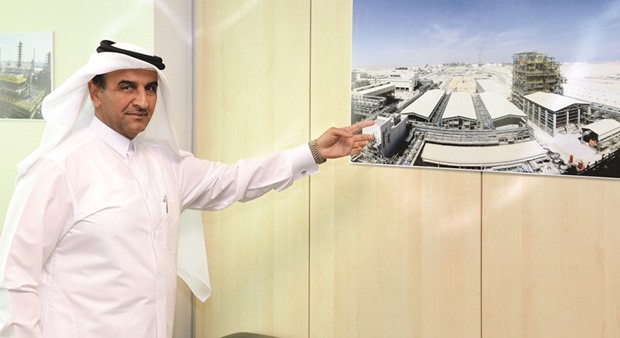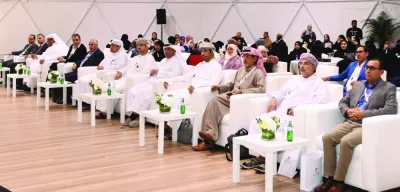Mena’s largest polysilicon production facility in Qatar is in the final stages of construction and is currently getting ready to reshape the region’s solar energy industry when the first large polysilicon plant rolls out later this year.
Located at Ras Laffan Industrial City, the Qatar Solar Technologies (QSTec) facility will run two polysilicon trains with a capacity to produce 8,000 metric tonnes a year of high grade polysilicon – the key ingredient used in over 90% of the world’s solar modules.
“Safety is a top priority on the site with 93% of the facility construction completed and over 31mn man-hours of construction without a single lost time incident,” said QSTec, a member of Qatar Foundation.
More than 3,000km of electrical cable is installed at QSTec in addition to a network of pipes that is over 200kms long. Construction utilised 15,000 metric tonnes of steel and 100,000 cubic metres of concrete.
QSTec has 1.2mn sqm of land in RLIC, which will allow for future expansion along the solar value chain to ultimately produce high quality solar modules and technologies in Qatar.
“We are gearing up to move the plant from construction stage into the production phase. This phase of the project is a very proud moment for all involved as we witness this enormously complex manufacturing facility come to life and see QSTec’s polysilicon transformed by our partners into solar modules and technologies for use throughout the world,” said Dr Khalid K al-Hajri, chairman and CEO, QSTec.
The Ras Laffan facility is home to QSTec’s largest solar installation project, which generates 1.1 megawatts of solar energy.
The solar farm provides energy to QSTec’s administration buildings and is just one of many sustainable technology solutions utilised in this plant.
“In line with the Qatar National Vision 2030, we are producing solar technologies and solutions locally and exporting products and knowledge globally. QSTec and its partners are bringing additional research opportunities across the value chain of the industry to Qatar and we are committed to using research as our guiding force. The strong solar research and development (R&D) base that has been developed in Qatar by Qatar Foundation, QEERI, QSTP and others already offer a great many opportunities for QSTec,” he added.
While the polysilicon plant has been under construction, QSTec has steadily been expanding its presence within the global solar industry.
“QSTec has a vision to become a world leader in integrated solar solutions, from research and manufacturing to supply-chain and investments, and is prepared to harness the full potential of solar for the benefit and prosperity of all,” asserted Dr al-Hajri.
QSTec will continue with its expansion strategy locally and internationally by increasing its solar industry development within the technology and manufacturing sectors and we value co-operative participation with others for its achievement.
QSTec is a joint venture with Qatar Foundation for Education, Science and Community Development, SolarWorld AG and Qatar Development Bank and as such education is a key mandate for the organisation. To address this need it created Shams Generation – a hands-on solar learning programme that is currently running across 20 schools in Qatar.
“We are extremely proud of QSTec’s Shams Generation programme,” Dr al-Hajri said, adding: “We have to educate these young minds about solar energy, the environment and how to be more sustainable and Shams Generation is addressing this need. We have grown from 4 schools and 2,500 students last year to over 20 schools and 7,000 students this year.”

Dr Khalid K al-Hajri, chairman and CEO, QSTec.


